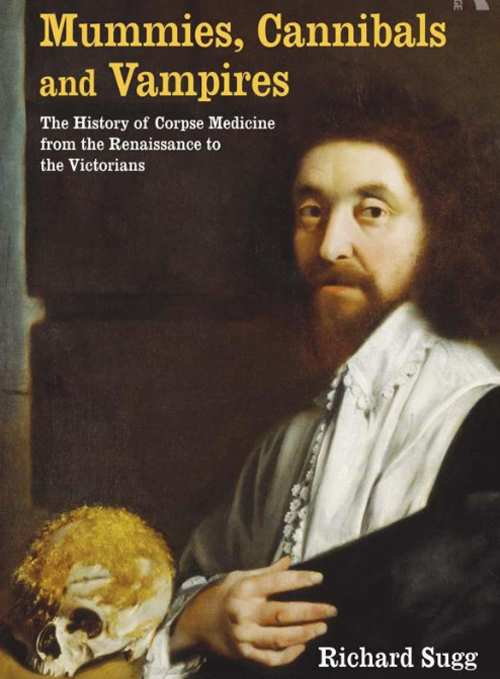Mummies, Cannibals and Vampires. The History of Corpse Medicine from the Renaissance to the Victorians
Review

Mummies, Cannibals and Vampires. The History of Corpse Medicine from the Renaissance to the Victorians, Richard Sugg, Routledge, 2011, paperback, £24.99 ISBN 9780415674171.
Notwithstanding its box-office blockbuster-style title, this serious, chronologically wide-ranging study by a lecturer in Renaissance Literature at the University of Durham identifies evidence of cannibalistic practices in European medical treatments and discusses what they reveal about cultural assumptions about the body in the long Renaissance extending to the threshold of the Victorian era. It is concerned with ‘the largely neglected and often disturbing history of European court medicine: when kings, ladies, gentlemen, priests and scientists used and consumed human body parts to treat a broad variety of common ailments of the time'. We learn, for example, that while the discriminating James 1 studiously declined corpse medicine, his son Charles 1 was himself utilised for corpse medicine, whilst his grandson, Charles II manufactured his own corpse medicine. Its topicality through three generations of Stuart kings helps to establish its legitimacy as a serious field for historical enquiry. Its more usual, non-regal sources of supply were derived from European battlefields and execution scaffolds via the courtly laboratories of Italy, France and Britain. It concludes, controversially, that historically the real cannibals were not so much the tribal man-eating primitives of the Americas but post-Renaissance Europeans, notwithstanding the advance of scientific medicine during this period. It makes interesting reading, though perhaps not before meals.

